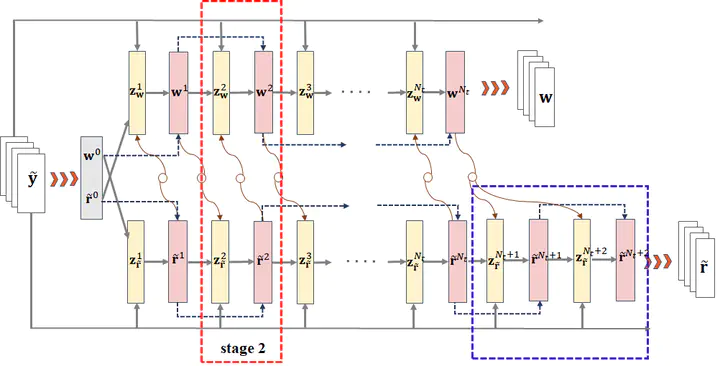Optimization-inspired deep learning high-resolution inversion for seismic data
 Image credit: Unsplash
Image credit: UnsplashAbstract
Seismic high-resolution processing plays a critical role in reservoir target detection. As one of the most common approaches, regularization can achieve a high-resolution inversion result. However, the performance of regularization depends on the settings of the associated parameters and constraint functions. Further, it is difficult to solve an objective function with complex constraints, and it requires designing an optimization algorithm. In addition, existing algorithms have high computational complexity, which impedes the inversion of the large data volume. To address these problems, an optimization-inspired deep learning inversion solver is proposed to solve the blind high-resolution inverse (BHRI) problems of various seismic wavelets rapidly, called BHRI-Net. The method builds on ideas from classic regularization theory and recent advances in deep learning, and it makes full use of prior information encoded in the forward operator and noise model to learn an accurate mapping relationship. It unrolls the alternating iterative BHRI algorithm into a deep neural network, and it applies the convolutional neural network to learn proximal mappings, in which all parameters of the BHRI algorithm are learned from training data. Further, the proposed network can be split into two parts and incorporate the transfer learning strategy to invert field data, which increases the flexibility of the proposed network and reduces training time. Finally, the tests on synthetic and field data show that the proposed method can effectively invert the high-resolution data and seismic wavelet from observation data with improved accuracy and high computational efficiency.